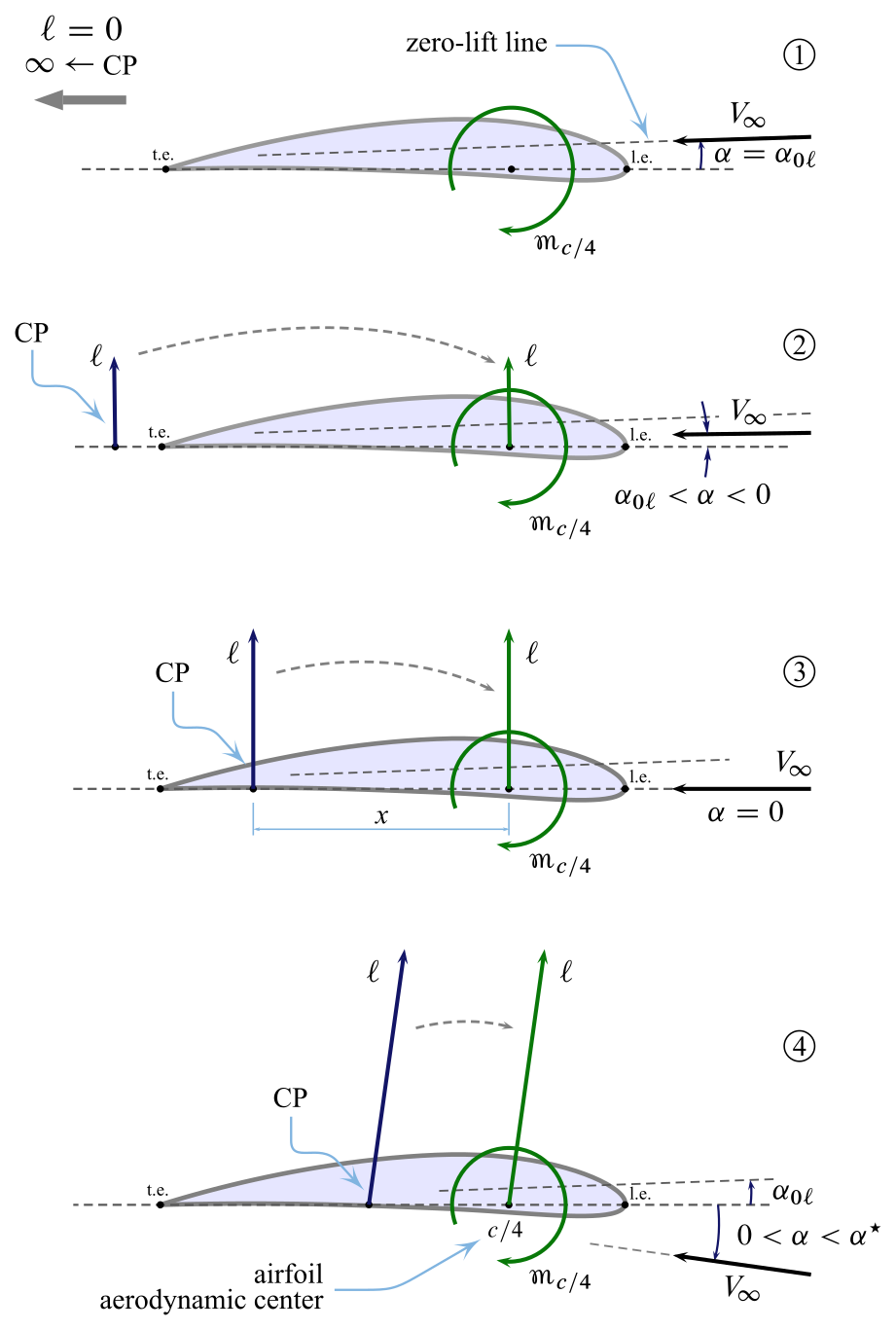

The NACA 8H12, dear to the hearts of amateur gyro designers, was developed by the NACA as a replacement for the NACA 0012 on helicopters but didn’t pan out. Among this class of airfoil are most modern helicopter rotorblade airfoils the Boeing VR-7 comes to mind. The same story goes for airfoils that are cambered but reflexed for a zero pitching moment coefficient.

Something like Moses’ stone tablets.Ī symmetrical airfoil, the NACA 0012 for instance, has its aerodynamic center at the ~ ¼ chord point as do most conventional airfoils and a zero moment coefficient, leaving the center of pressure and aerodynamic center coincident. You might think someone would go through that stuff and correct the errors, but the Government doesn’t work that way. Much of the filler material has been around since the Wright Brothers. But I’m not surprised that some of the FAA publications still refer to center of pressure.
#Center of pressure airfoil plus#
The modern expression is aerodynamic center plus a pitching moment if cambered and not reflexed. If I am wrong please someone correct me I too would like to know the correct answer.Ĭenter of pressure was a term coined, I presume, by the Wright Brothers. this will not cause a flutter but will make the blade harder to feather because the nose wants to pitch down the same will happen if the blade chordwise CG is to far forwards on the blade the blade will be nose heavy. that will cause the blade to pitch up and flutter. Now if you ment the chord wise CG of the blade behind the CP and not the feathering axis behind the CP. why it is done like that no one has ever been able to answer why. This is the same way the Helicycle helicopter has there blades set up 23012 airfoil 25% CP and CG with a 35% chord feathering axis.works OK there. if you hang it at say 35% chord the blade would hang tilted that is the way it would need to be mounted on the head to line up the Centrifugal pull through the blade span wise.

So in other words if you hung the blade vertical from the root at 25% chord the blade would hang straight. Now don't hold me to this one I asked chuck the same thing a couple years ago normally the feathering axis is at 25% chord in front of the CP it should work OK behind the CP but if there is any adverse effects he did not sure.īut now you have a blade that the CG of the blade is at 25% where all normal rotorblades are at you put the feathering axis behind the CP and the chordwise CG the centrufugal pull through the blade is is not correct now you would need to lag the blade to line up the centrifugal pull through the blade. the feathering axis it usually at 25% chord and the CP is at 30% chord at least on a symetrical blade it is. Most rotorblades the center of pressure is behind the feathering axis. If I am wrong I am sure someone will correct me.


 0 kommentar(er)
0 kommentar(er)
